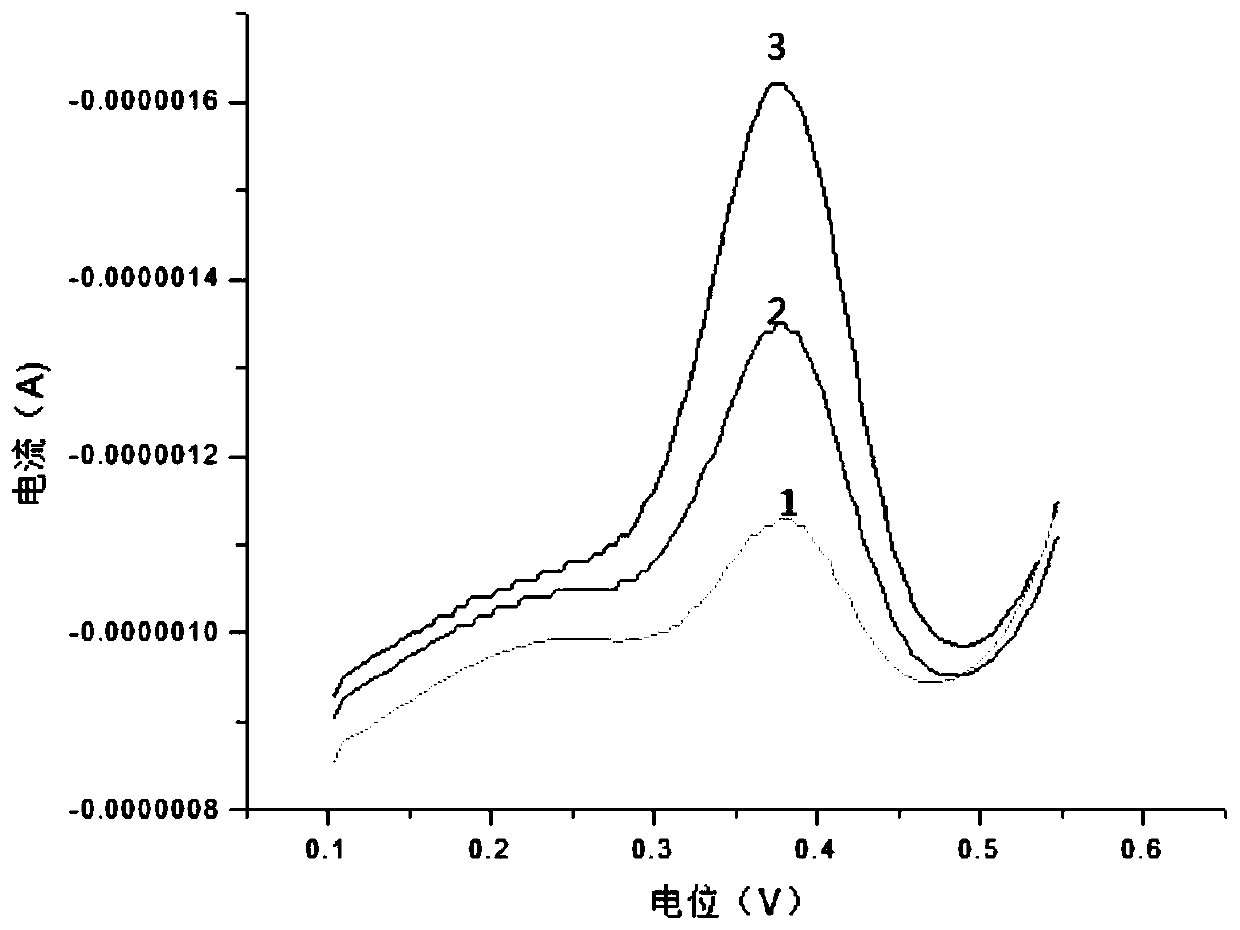Printed electrode and preparation method thereof, and method for detecting heavy metal ions in water
A technology of heavy metal ions and printed electrodes, which is used in measurement devices, electrochemical variables of materials, material analysis by electromagnetic means, etc., can solve the problems of large differences in measurement results, and it is difficult for reference electrodes to provide stable electrode potential, etc. achieve good repeatability
- Summary
- Abstract
- Description
- Claims
- Application Information
AI Technical Summary
Problems solved by technology
Method used
Image
Examples
Embodiment 1
[0023] A preparation method of a reusable gold-plated screen-printed electrode, the specific method comprising the steps of:
[0024] S101, modification of the disposable printed electrode reference electrode. Insert the disposable printed electrode into the electroplating solution containing chloride ions, use the reference electrode of the printed electrode as the anode, and the counter electrode of the printed electrode as the cathode, and apply a positive voltage of 2.2V for 60s;
[0025] S102, pickling the surface of the printed electrode working electrode. Connect the printed electrode processed in step S101 to the measuring device of the portable heavy metal meter, insert it into the nitric acid solution with a pH value of 2.0, and apply a voltage of 1.2v for 300s;
[0026] S103, rinse the printed electrode pickled in step S102 with deionized water, transfer it to a mixed solution of 0.042g / L chloroauric acid and 0.1mol / L hydrochloric acid, and apply a voltage of -0.3v...
Embodiment 2
[0030] A method for the detection of heavy metal copper ions in water using reusable gold-plated screen-printed electrodes. The specific method includes the following steps:
[0031] S201, connect the gold-plated screen-printed electrode prepared in Example 1 directly to the portable heavy metal meter measuring device, and insert 20ml of 10μg / L heavy metal copper ion standard solution, add 2ml of copper electrolyte, apply a voltage for a certain period of time, and stand still for 20s After scanning, stripping, and then applying a certain positive voltage to clean the surface of the working electrode. In this step, the applied enrichment potential is -0.80v; the applied enrichment potential time is 60s; the scanning dissolution range is -0.3v~0.5v; the applied cleaning potential is 0.6v; the applied cleaning potential time is 30s .
[0032] S202, after step S201 is completed, continuously add the standard twice in the same measuring cup, and reuse the electrode in step S201....
Embodiment 3
[0034] A method for detecting heavy metal arsenic ions in water by using a reusable gold-plated screen-printed electrode, the specific method comprising the following steps:
[0035] S301, connect the gold-plated screen printing electrode prepared in Example 1 into the measuring device of the portable heavy metal meter, insert 10ml of 10μg / L heavy metal arsenic ion standard solution, add 10ml of arsenic electrolyte and 0.2ml of reducing agent solution, and apply a certain Time voltage, after resting for 20s, scanning, stripping, and then applying a certain positive voltage to clean the surface of the working electrode. In this step, the applied enrichment potential is -0.5v; the applied enrichment potential time is 60s; the scanning dissolution range is -0.3v~0.3v; the applied cleaning potential is 0.6v; the applied cleaning potential time is 30s.
[0036] S302, after step S301 is finished, continuously add the standard twice in the same measuring cup, and reuse the electrode ...
PUM
 Login to View More
Login to View More Abstract
Description
Claims
Application Information
 Login to View More
Login to View More - R&D
- Intellectual Property
- Life Sciences
- Materials
- Tech Scout
- Unparalleled Data Quality
- Higher Quality Content
- 60% Fewer Hallucinations
Browse by: Latest US Patents, China's latest patents, Technical Efficacy Thesaurus, Application Domain, Technology Topic, Popular Technical Reports.
© 2025 PatSnap. All rights reserved.Legal|Privacy policy|Modern Slavery Act Transparency Statement|Sitemap|About US| Contact US: help@patsnap.com



